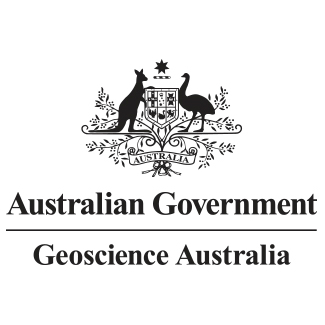Brief description
This resource includes bathymetry data acquired during the Visioning the Coral Sea Marine Park bathymetry survey using Kongsberg EM302 and EM710 multibeam sonar systems. Visioning the Coral Sea Marine Park bathymetry survey (FK200429/GA4861) was led by Dr. Rob Beaman (James Cook University) and a team of scientists from Geoscience Australia, The University of Sydney, and the Queensland Museum, aboard the Schmidt Ocean Institute’s research vessel Falkor, from the 29th of April to 11th of June 2020. The primary objective of the survey was to map in detail the Queensland Plateau, including the steeper reef flanks and target the enigmatic seabed features, like the numerous drowned reef pinnacles and long meandering channels on the plateau surface. The second objective of this survey was to investigate the extent of the bleaching on the mesophotic or deeper reef, and if these reefs could act as a potential refuge for the Great Barrier Reef. The survey also aimed at providing insights into the geological evolution and biodiversity of Australia’s marine frontier. This dataset is not to be used for navigational purposes. This dataset is published with the permission of the CEO, Geoscience Australia.Lineage
Maintenance and Update Frequency: asNeeded
Statement: For V1
- Vertical Datum: MSL and Ellipsoid
- Horizontal Datum: WGS84 (epsg-4326)
Processing methodology:
This dataset was produced using CARIS HIPS/SIPS v.11.3.23 and AusSeabed processing methodology as follows:
1. A new Caris project was created in conjunction with existing or newly created vessel configuration file(s).
2. The raw swath sonar data files were imported to the project. GGK is the preferred navigation and ellipsoid height source.
3. The POSMV data files were imported to the project to bring in delayed heave, delayed heave RMS, ellipsoid height and ellipsoid height RMS.
4. TPU and GPS tide were computed and all data were georeferenced (merged) to ellipsoid vertical datum.
5. A CUBE surface was generated as a reference surface for data cleaning.
6. An automated data cleaning using the surface cleaning method with the reference surface was undertaken.
7. The final grid was produced at a single resolution for the entire depth range according to the deepest depth.
8. The second grid was produced by shifting to EGM2008.
9. The final processed grids were exported as a 32-bit floating point Geotiffs at 64m resolution, referenced to ellipsoid and EGM2008.
For V2
- Vertical Datum: EGM2008
- Horizontal Datum: WGS84 (epsg-4326)
Processing methodology (in addition to what was applied in V1):
1. EGM2008 vertical datum was applied to the data.
2. Close inspection and manual filtering of noise
3. Two grids were produced. A 64 m grid and 16 m grid. The 64 m grid includes the whole dataset minus suppressed noise. The 16 m grid only includes depths of 2560 m and shallower to maintain consistent coverage and provides a higher resolution image of the seabed
Notes
PurposeDistribution of the processed data products at the completion of the Visioning the Coral Sea survey conducted as part of a Geoscience Australia and Schmidt Ocean Institute collaboration.
Issued: 23 06 2020
Data time period: 2020-04-29 to 2020-06-15
text: westlimit=146.00; southlimit=-21.00; eastlimit=153.00; northlimit=-13.00; projection=WGS 84 / UTM zone 55S (EPSG:32755)
text: uplimit=0; downlimit=0
Subjects
AusSeabed |
Bathymetry |
Biodiversity |
Coral Sea |
EARTH SCIENCES |
HVC_144641 |
Multibeam Echo Sounder |
Published_External |
Schmidt Ocean Institute |
Seabed |
geoscientificInformation |
User Contributed Tags
Login to tag this record with meaningful keywords to make it easier to discover
Other Information
Visioning the Coral Sea Bathymetry 2020 16m - 64m (zip) [486.5 MB]
Identifiers
- DOI : 10.26186/140048

- URI : pid.geoscience.gov.au/dataset/ga/140048

- global : 062812b7-5977-4bee-962a-981001e457a6


